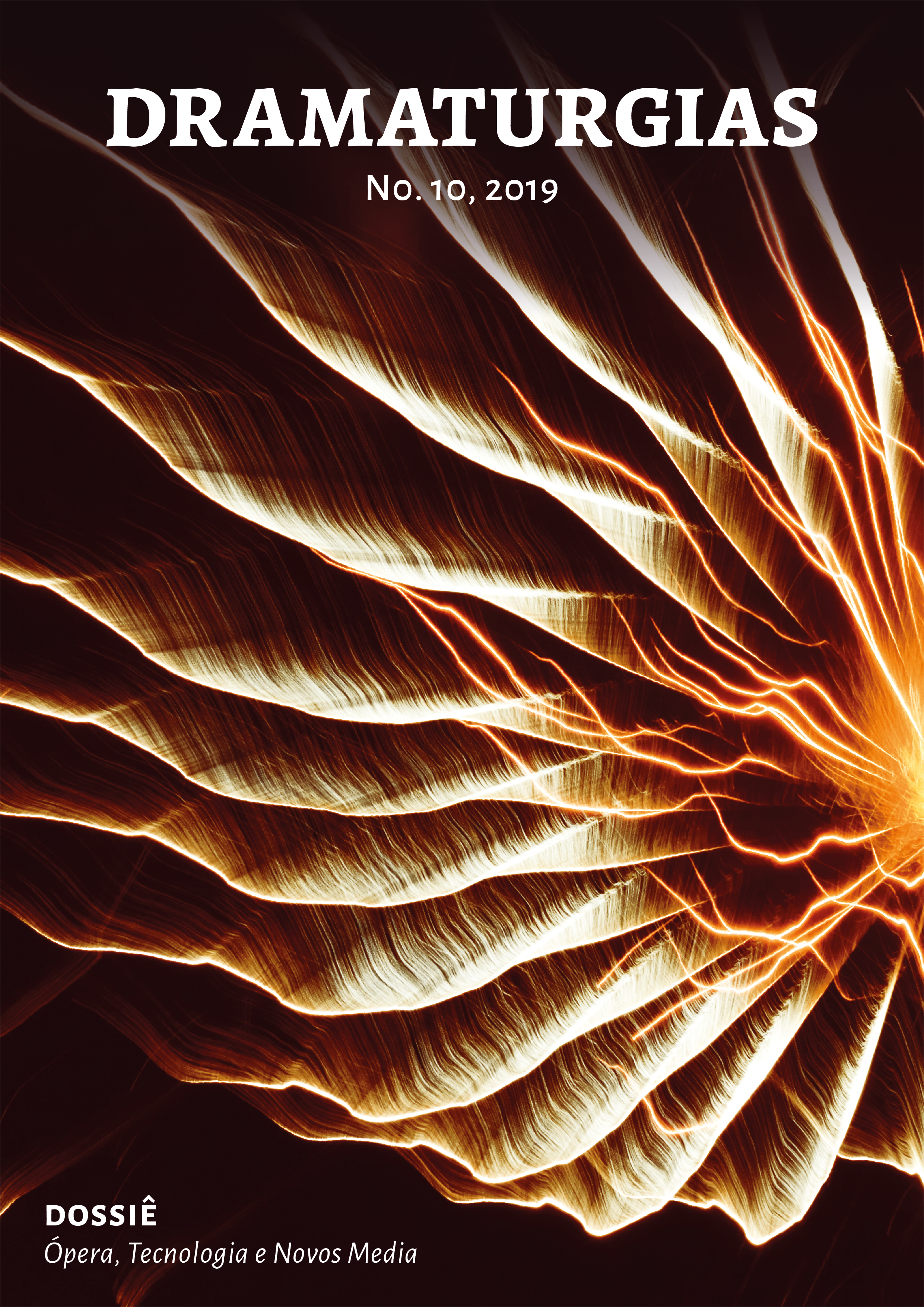The aura of the Opera at the time of its announced fall
DOI:
https://doi.org/10.26512/dramaturgias.v0i10.24868Keywords:
Opera. Film. Aura. Tecnology. Remediation.Abstract
This article focuses on three recent operatic objects: Andrea Andermann’s live films of Tosca, La Traviata, and Rigoletto (released in a DVD/Blu-ray box set in 2015); Tom Volf ’s “Maria by Callas” project (on-going since 2017); and the live broadcasts from ope- ra houses to movie theaters, particularly those from the Metropolitan Opera House and the Royal Opera House (since 2006 and 2008, respectively). Based on their examination, I discuss the paradox of the persistence of aura within today’s increasingly mediatized cultural landscape. This paradox takes on the form of the coexistence between an enthu- siasm for technological reproduction and remediation, and a fascination with the values of originality, authenticity, and liveliness. How this paradox unfolds in the case of opera and to what extent it can be overcome are the questions orienting this essay.
Downloads
References
ANDERMANN, Andrea, “Electronic Tosca”, in livreto de 3 Live Films: Rigoletto in Mantua, La Traviata in Paris, Tosca in Rome, DVD/Blu-ray, Naxos 2.110374-77 (2016), p. 14.
ANDERMANN, Andrea, citado in ibid., p. 13.
Charles Affron e Mirella Jona Affron, Grand Opera: The Story of the Met (Oakland: University of California Press, 2014), p. 356.
Carolyn Abbate & Roger Parker, A History of Opera (New York: Norton, 2015), 552.
James Steichen, “The Metropolitan Opera Goes Public: Peter Gelb and the Institutional Dramaturgy of The Met: Live in HD”, Music and the Moving Image 2, no. 2 (Verão de 2009), p. 29.
Downloads
Published
How to Cite
Issue
Section
License
Autores mantém os direitos autorais e concedem à revista o direito de primeira publicação, com o trabalho simultaneamente licenciado sob a Licença Creative Commons Attribution que permite o compartilhamento do trabalho com reconhecimento da autoria e publicação inicial nesta revista.



